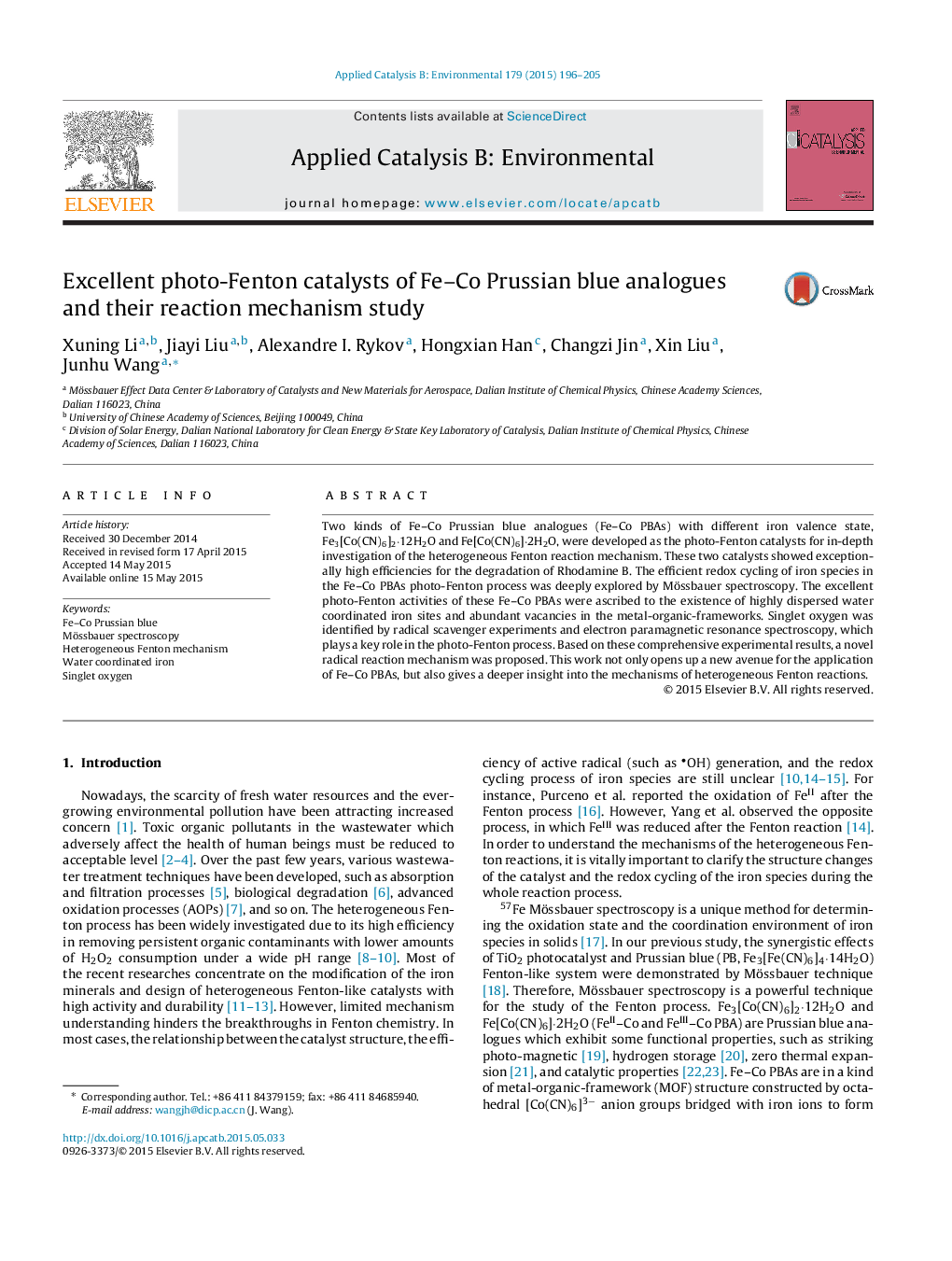| Article ID | Journal | Published Year | Pages | File Type |
|---|---|---|---|---|
| 45449 | Applied Catalysis B: Environmental | 2015 | 10 Pages |
•Fe–Co PBAs were developed as the excellent photo-Fenton catalysts.•Iron redox cycling in the Fe–Co PBAs photo-Fenton process was investigated.•The structural properties and reaction mechanisms of Fe–Co PBAs were explored.•The singlet oxygen was identified and relevant radical reactions were proposed.•The high recyclability of FeIII–Co PBA and oxidized FeII–Co PBA was identified.
Two kinds of Fe–Co Prussian blue analogues (Fe–Co PBAs) with different iron valence state, Fe3[Co(CN)6]2·12H2O and Fe[Co(CN)6]·2H2O, were developed as the photo-Fenton catalysts for in-depth investigation of the heterogeneous Fenton reaction mechanism. These two catalysts showed exceptionally high efficiencies for the degradation of Rhodamine B. The efficient redox cycling of iron species in the Fe–Co PBAs photo-Fenton process was deeply explored by Mössbauer spectroscopy. The excellent photo-Fenton activities of these Fe–Co PBAs were ascribed to the existence of highly dispersed water coordinated iron sites and abundant vacancies in the metal-organic-frameworks. Singlet oxygen was identified by radical scavenger experiments and electron paramagnetic resonance spectroscopy, which plays a key role in the photo-Fenton process. Based on these comprehensive experimental results, a novel radical reaction mechanism was proposed. This work not only opens up a new avenue for the application of Fe–Co PBAs, but also gives a deeper insight into the mechanisms of heterogeneous Fenton reactions.
Graphical abstractFigure optionsDownload full-size imageDownload as PowerPoint slide
